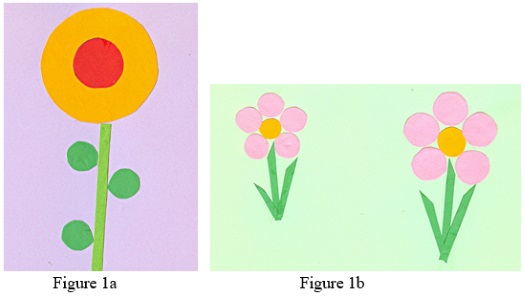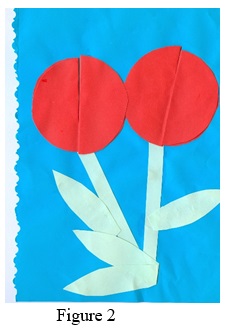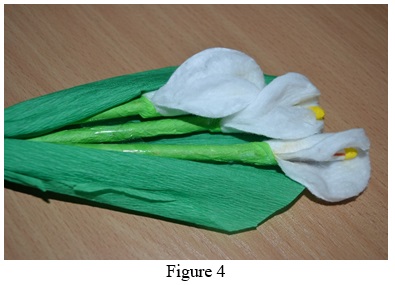Editorial
This article is part of Project 08-106/06.02.2017 of Dobrich College, Shumen University.
Creativity and Arts and Crafts in Teaching English to Young Learners
Zhivka Ilieva, Iliya Iliev, Dobrich College, Shumen University, Bulgaria
Zhivka Ilieva is an associate professor at Dobrich College, Shumen University. She has a PhD in Methodology of English Language Teaching. As part of her research she has classes at primary schools and at kindergartens. She presents at conferences dedicated to language teaching and teacher training in Bulgaria and abroad. E-mail: zh.ilieva.bg@gmail.com
Iliya Iliev is an assistant professor at Dobrich College, Shumen University. He teaches primarily methodology of teaching arts and crafts to future primary and pre-primary teachers. E-mail: iliya.iliev@shu.bg
Menu
Introduction
Teaching very young learners
Examples of suitable activities
Conclusions
References
Cross-curricular teaching is very important with young and very young learners since at this age we work towards the holistic development of the child. Whole language learning means teaching language (and all the other subjects in the curriculum) as part of the complex development of the learner.
Arts and crafts activities are very suitable for introducing words and phrases in English, for integrating the foreign language in the process of doing. Arts and crafts activities foster children‘s creativity, they provide not only context for language use but a product to show at home, to decorate the classroom with and to be proud of.
As Andrew Wright (2002: 4) says, “Children, in particular, learn by doing. Art, craft and design offer a perfect example of activities which must be done and in the doing, language can play a key part.“
In Harvey‘s (2015: 31) opinion“Arts is an accessible resource and we have the web to spark ideas. It engages children to think outside of their immediate surroundings and enables them to explore other worlds regardless of their language ability. ... It provides an alternative vehicle for communication and reticent English language learners can use crafts as speaking support. They also promote autonomy. While engaged in a project, task and process language is reinforced; quieter learners have a chance to ask for, explain and sometimes even organize their peers to achieve the desired learning outcome.“
Arts and crafts activities can be a sound foundation for project and task based learning, cross-curricular teaching and integrative approach.
Trowbridge (2006) reccommends arts and crafts activities because they are suitable for mixed abilities groups, they incorporate cross-curricular activities in the English language classroom, they provide opportunities for drama and suitable conditions for teamwork and sharing, they can be a way of recycling linguistic material.
Vickery-Smith (1998-2017) claims that “few activities offer greater opportunity for natural language use and development in the ELL classroom.“ These activities develop all the skills, they build vocabulary through “meaningful interaction and realia“, they develop “fine and gross motor skills“, creative thinking, and cooperation.
Through these activities creativity is fostered, language is easily acquired, language and communicative skills are developed as well as crafts and design skills and sense of arrangement and beauty.
We offer a few activities that are united by the basic material used to produce the picture or item. All of these examples use circles as a base for arts and crafts creativity and as an opportunity to integrate English and arts and crafts to mathematics.
Example 1
Flowers made of circles (fig. 1a and 1b)

Age: 3-4
Materials: circles of various size and colour, materials for stems and leaves
Language: circle, flower, stem, leaves, colours // glue, paper, arrange, paste
The instructions are given mainly in Bulgarian and certain phrases are introduced in English.
E.g. choose a circle, make a flower, let‘s arrange our flowers, now paste your application
When the pictures are ready, the teacher asks What colour is it/this? and the learners answer It‘s pink/blue.
Example 2
Pop up flowers (fig. 2)

Age: 4-6
Materials: circles of various colour, materials for stems and leaves
Language: circle, semi circle, half/halves, flower, stem, leaves, colours // glue, paper, fold, paste
The instructions are given in English while demonstrating the actions: Choose two circles of the same colour (showing) and fold them into two halves in order to receive semi circles. Paste one of the halves, then paste the other circle next to it so that the two folded half circles form a full circle. Make at least one more flower. Add stems and leaves.
Example 3 (fig. 3b)
A basket

Age: 4-6
Materials: big circles (made of A4 paper) (fig. 3a)
Language: basket, circle, opposite, fold, scissors
The instructions are given in English while demonstrating the actions: Take a circle, take the two opposite ends so that the rims meet. Fold the lower end up so that you form a pocket – the basket (showing). Now you can fill it in. You can use flowers or Easter eggs. The teacher has prepared some flowers and eggs made of paper and temlates for the learners to make their own figures for their baskets. (fig. 3a and 3b). When learners work with scissors we always remind them to be careful, to work carefully and to keep the scissors shut when not used. This is an important condition for the learners’ safety.
Example 4
Cala-lilies (fig. 4)

Age: 5-7
Materials: white circles (cosmetic pads), cotton buds (one end coloured in yellow), materials for stems and leaves
Language: cala-lily, circle, cosmetic pads, cotton buds, stem, leaves
The instructions are given in English while demonstrating: Take a circle, take the two opposite rims and join them so that they form a cala flower (showing), insert the cotton bud inside so that it is complete, add stems and leaves.
The four activities develop children‘s technological culture (folding, being precise, coordination, arranging and then pasting) and while working children acquire some words and phrases in English.
All these activities unite English, arts and crafts, mathemathics and other subjects (e.g. natural science concerning flowers and the structure of the plant, culture if we put Easter eggs in the basket (as Figure 3b shows), etc.) this way realizing the integrative approach, learning by doing, lexical approach since children remember some of the phrases from the instructions given in English. Arts and crafts activities engage more than one intelligences and develop creativity. We have to train creative teachers so that they educate creative children.
Harvey, K., (2015). Using Arts and Crafts in the Primary Language Classroom. C&TS Digital, Young Learners and Teenagers SIG, 2015: 2, pp. 31-33.
Trowbridge, S., (2006). Arts and crafts with young learners.
https://www.teachenglish.org.uk/article/arts-crafts-young-learners
Vickery-Smith, J., (1998-2017). Arts and Crafts. The EFL Playhouse.
www.esl4kids.net/crafts.html
Wright, A., (2002). Art and crafts in language teaching. CATS, 2002: 2, pp. 4-7.

Please check the Methodology and Language for Kindergarten course at Pilgrims website.
Please check the Methodology and Language for Primary course at Pilgrims website.
Please check the Creative Methodology for the Classroom course at Pilgrims website.


|